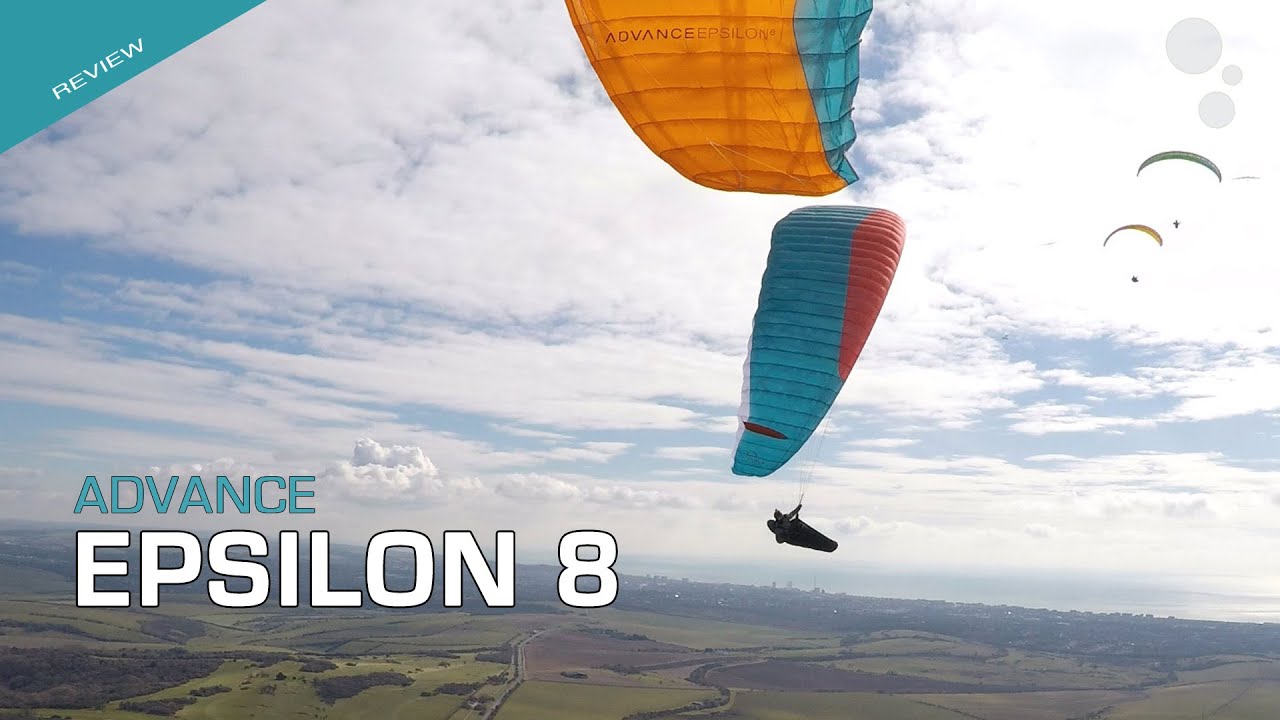
The Advance EPSILON 8 is a recreational 'mid' EN B wing, intended for pilots with a year or more of flying experience but who still want security and simplicity in their flying. It comes in above the entry-level Alpha 6 and below the high-performance Iota. Greg Hamerton tested the wing in varied conditions, including a 100 km XC flight.
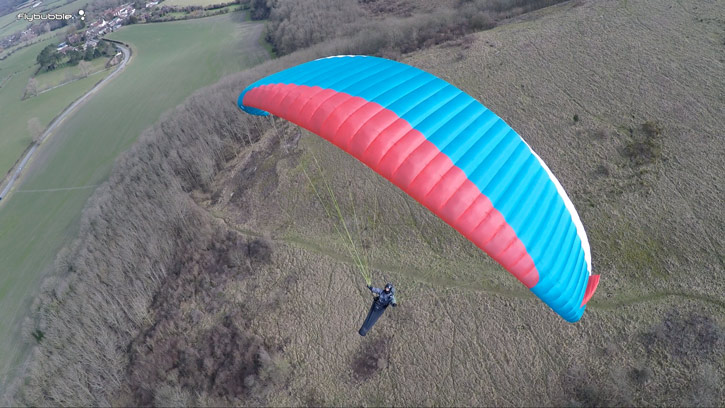
EPSILON 8 leading edge from above
The Advance EPSILON 8 is a recreational 'mid' EN B wing, intended for pilots with a year or more of flying experience but who still want security and simplicity in their flying. It comes in above the entry-level Alpha 6 and below the high-performance Iota. It's light and simple to set up. It looks fairly low-aspect and reassuring when you pull it up.
Launching
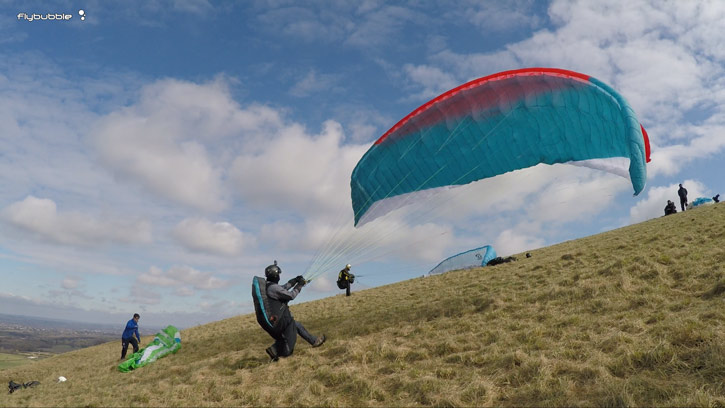
Easy launching in strong winds
Launch is simple, it will overshoot a little if allowed to, so needs a check brake, and it drops back from 50 degrees in a slow manner without recovering unless a lot of As are engaged.
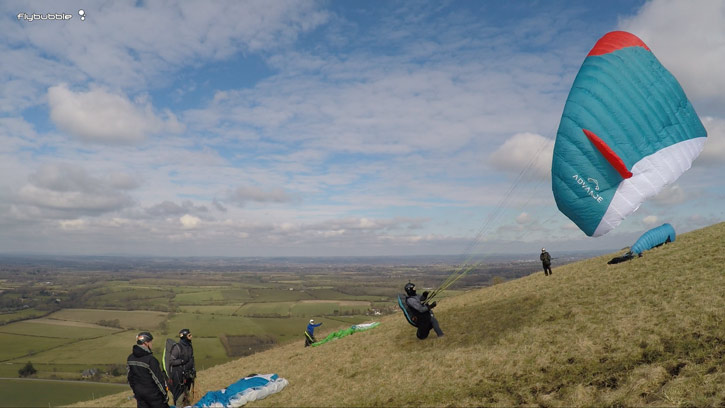
The wing will settle from this point
The wing bows along B and C attachment points which draw it down to softly settle on the ground even if the pilot is leaning back into wind. This might well extend the life of your wing if you regularly smack your wing back on the ground during failed launches.
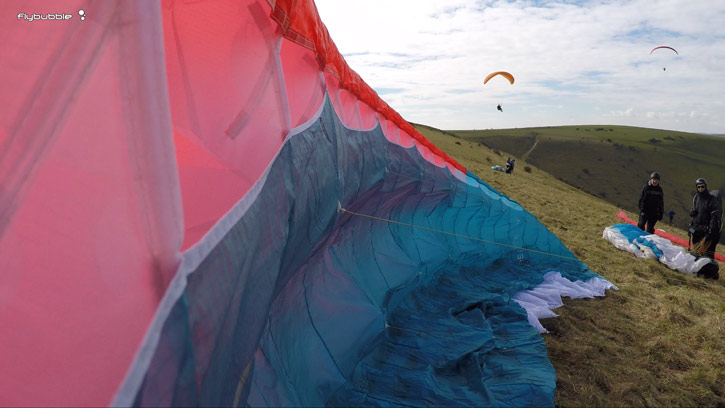
Up close to the leading edge
This seems like a departure from the norm for Advance, whose wings usually stay 'alive' all throughout the pullup arc, making them wonderful for ground handling or floating back uphill and tricky launches. But the wing can be bounced back to life once it has settled on the ground purely by stepping back (without the As) so the slowdown tendency is hardly noticed during the initial pullup. It is a safety feature that prevents the wing from jumping up from a skew position during failed launch attempts.
In the air
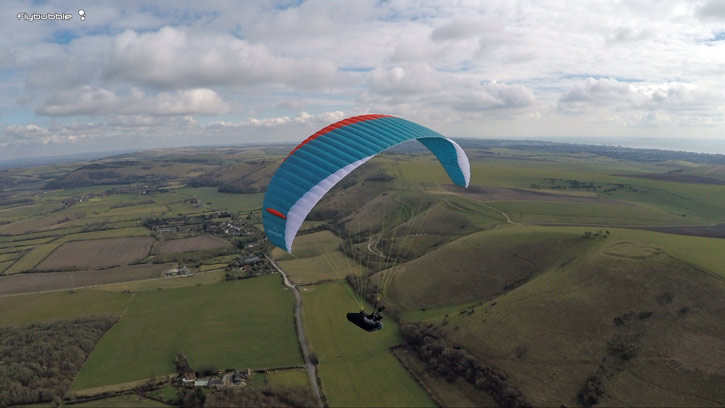
EPSILON 8 gliding
The EPSILON 8 feels like a classic intermediate wing, designed for simple handling. The brake engages the entire right or left half of the wing along the trailing edge without much grab in the tip area. The pressure is steady throughout most of the brake range, moderate and even. The turn is steady in soaring conditions, but in thermals I found the turn was quick. Weightshift and just a 'dab' of brake was enough to bring it around in an efficient thermaling turn.
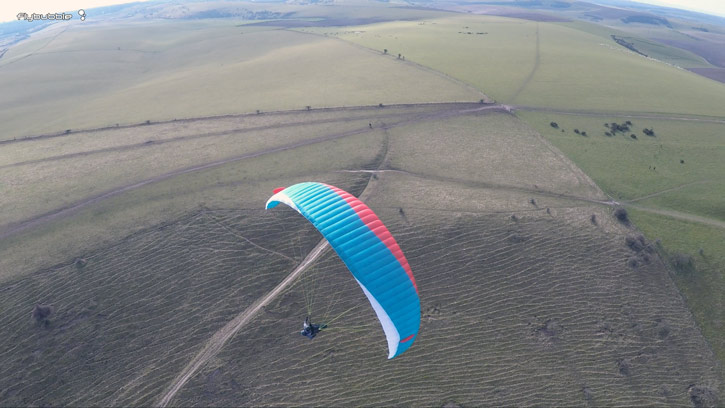
Banking it up in a thermal
It was more responsive than I'd expected, and it required leaning out of the turn or a touch of outside brake to stop it 'tipping in' to the turn at times. I was surprised it wasn't more restrained, given the usual Advance characteristic of making tight turns within the 'protected zone' of deep brakes with higher brake pressure. This change in handling will delight many pilots who are looking for more thermaling fun and less of a feeling of having 'training wheels' on.
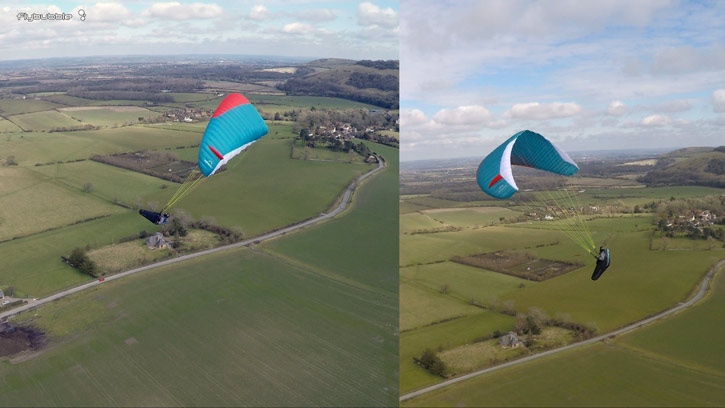
Pitch control test, inducing big dives then releasing the wing to see how it recovers
Pitch control is good: it dampens out pitch cycles after 1 pitch/dive, with more freedom than the Niviuk Hook 4 and Nova Ion 4, maybe something like Skywalk Tequila 4, it has some energy retention, the dampening is not immediate or complete.
Roll feedback damping is high; the wing is steady. Make no mistake you can turn it quickly if needed, it will roll a little way and enable that tight 'rotating' turn. It's just that in thermic air currents, the wing absorbs and distributes the roll energy. Too much feedback can be a burden for a new pilot, especially if you fly in rough conditions. In the mild UK air, I like a wing to communicate a bit more, but that's more appropriate in the higher classes.
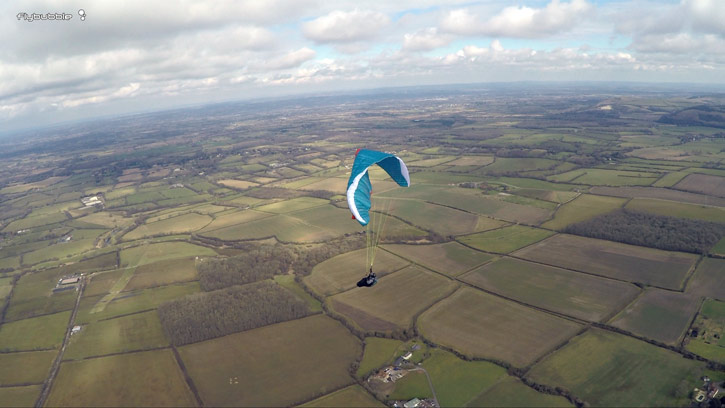
50% asymmetric collapse test, just to get a feel for its nature
The 50% asymmetric collapses I tried recovered instantly, with an aggressive reinflation similar to the Iota, although the larger size reacted with a slow rollout of the tip instead. Either way, there's no messing about: the EPSILON gets flying again fast.
Big ears were simple and stable, with nice split A's that hold themselves together magnetically during launch, and automatically separate under flying tension. A nice touch. The big ears reinflated immediately on release, indicating that the tips pull outwards and are trimmed more for safety than for performance.
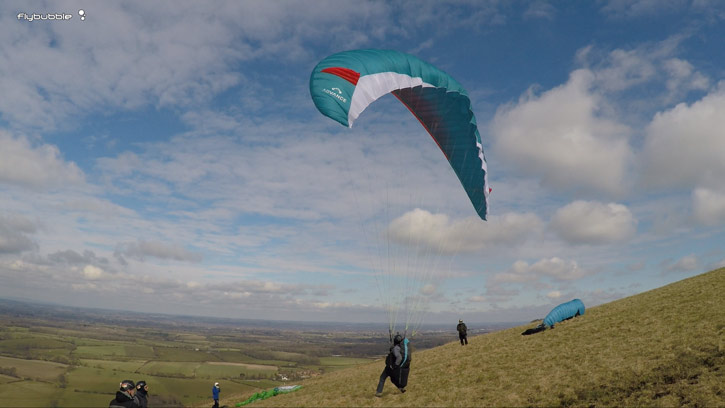
Testing the stall point
Stall point was exactly at the seat board with my hands through the brakes, after roughly 4 seconds: predictable and ideal for the class.
Although it is probably competitive within its class I noticed that the higher class wings sneaked away from me. Well, there's got to be something for the Sigma and Omega to do. There's so much flying you can access on the EPSILON, it will be years before you feel limited by its good nature. When you enjoy your flying, the performance will come.
EPSILON 8 for XC
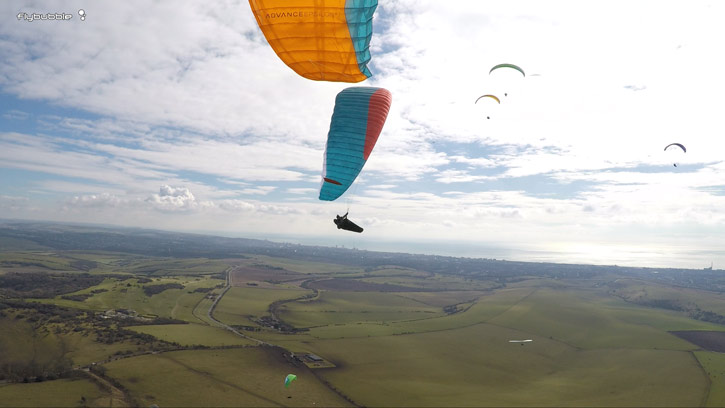
Tip to tip with the smaller size
I flew from Devils Dyke in typical tricky crosswind conditions, where patience and choosing the right lines was key. After 100 km the EPSILON 8 was still cruising along, and I was having a merry time.
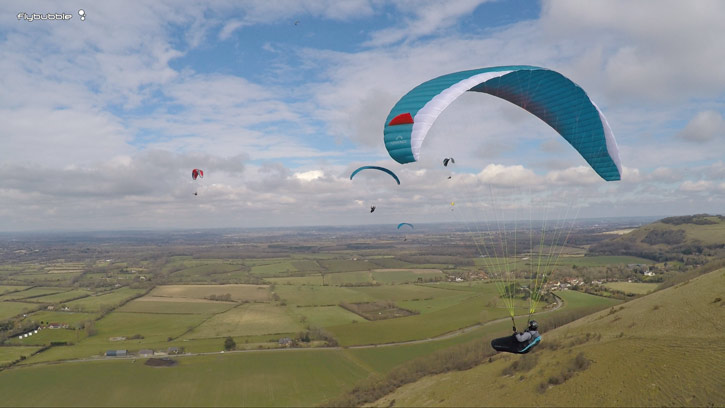
It made me realise how simple XC flying can be. Vario beeps; turn. Airspace or cloudbase coming up; go on glide. Watch the scenery go by. At one point I strayed a bit too close to a hungry cloud, so spiralled down on big ears and speedbar. The EPSILON 8 took the abuse without a hint of stress, with an easy low G descent and no retained energy. Just pull out, the ears popped out on their own, and I set off on half bar again. I flew the same distance as Carlo on his Artik 4, so there's hidden performance in the EPSILON 8, it just doesn't feel like it. It's not obvious, the wing doesn't snake or surge or accelerate the way a higher class wing would do, giving you the feeling of riding a racehorse. This is a nice friendly pony, it just goes on and on all day long, and anyone that knows adventuring in mountains ... you really want a pony not a racehorse.
Summary
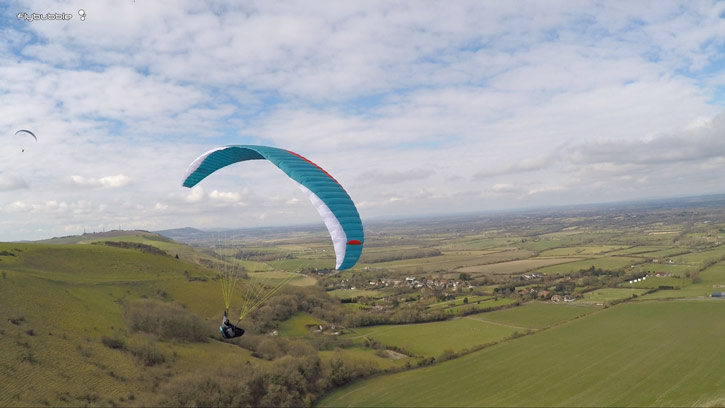
EPSILON 8 having fun
It fits perfectly in the middle of the Progression Class (mid EN B), where its simplicity and passive safety help to reduce the stress of challenging flying conditions. The thermal turn might catch heavy-handed pilots by surprise, but once you learn how it turns, you'll enjoy the tight thermaling with just a dab of brakes. It would appeal most to pilots who are progressing from some tired old first wing that just doesn't perform, pilots who have recognised the benefits of Advance quality and design reputation. If you're already in the Advance family you might be able to skip the EPSILON 8 altogether and go for the Iota, which isn't too large a step up for someone who has mastered the amazing Alpha 6. The EPSILON 8 brackets the midpoints of these wings rather than filling a gap between them.

On glide, an easy ride
Review conditions
Reviewed by Greg Hamerton: instructor with over 2500 hours, over 150 wings reviewed, flying since 1992. Currently flying Omega XALPS.
EPSILON 8 25 (70-90kg) flown @ 85kg
Flown at Devils Dyke 06/03/2016 10 degrees, 1m/s to 2000ft, busy sky with sporty thermals and smooth glides between. 1hour.
Flown at Bopeep 10/03/2016 9 degrees, 0.5m/s to 100ft above launch, scratchy light thermals with 10 pilots. 1hour
Flown at Devils Dyke 03/05/2016 16 degrees, 2m/s to 1500m, classic crosswinding xc day with glides thermals clouds and Sea Breeze Front. 100km+, 4h45.
Find out more about the Advance EPSILON 8 >
Advance EPSILON 8 paraglider review video
Brought to you by Flybubble
Want to see more? There’s no better way to support our efforts than buying from us. We’ll ensure you get great service! Choose from our great range AND enable us to produce more videos and articles to benefit the freeflight community.

